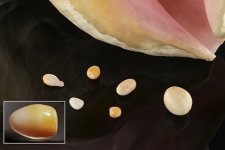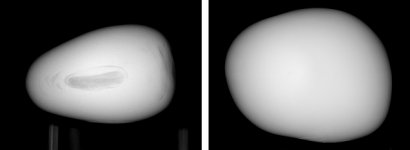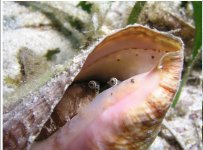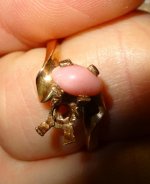via GIA: http://www.gia.edu/gems-gemology/summer-2015-gemnews-nonbead-cultured-pearls-strombus-gigas


Figure 3. Left: An X-ray of the pearl seen in the figure 9 inset. It shows clear evidence of a nonbead culturing process. Right: An X-ray of a natural conch pearl. Images by Olivier Segura.
I can't imagine the natural pearl guys are going to be happy about this....
According to the farm owners, queen conch pearl culture is undergoing intensive development, and the quality?size, flame pattern, and color?improves with each harvest.


Figure 3. Left: An X-ray of the pearl seen in the figure 9 inset. It shows clear evidence of a nonbead culturing process. Right: An X-ray of a natural conch pearl. Images by Olivier Segura.
I can't imagine the natural pearl guys are going to be happy about this....


